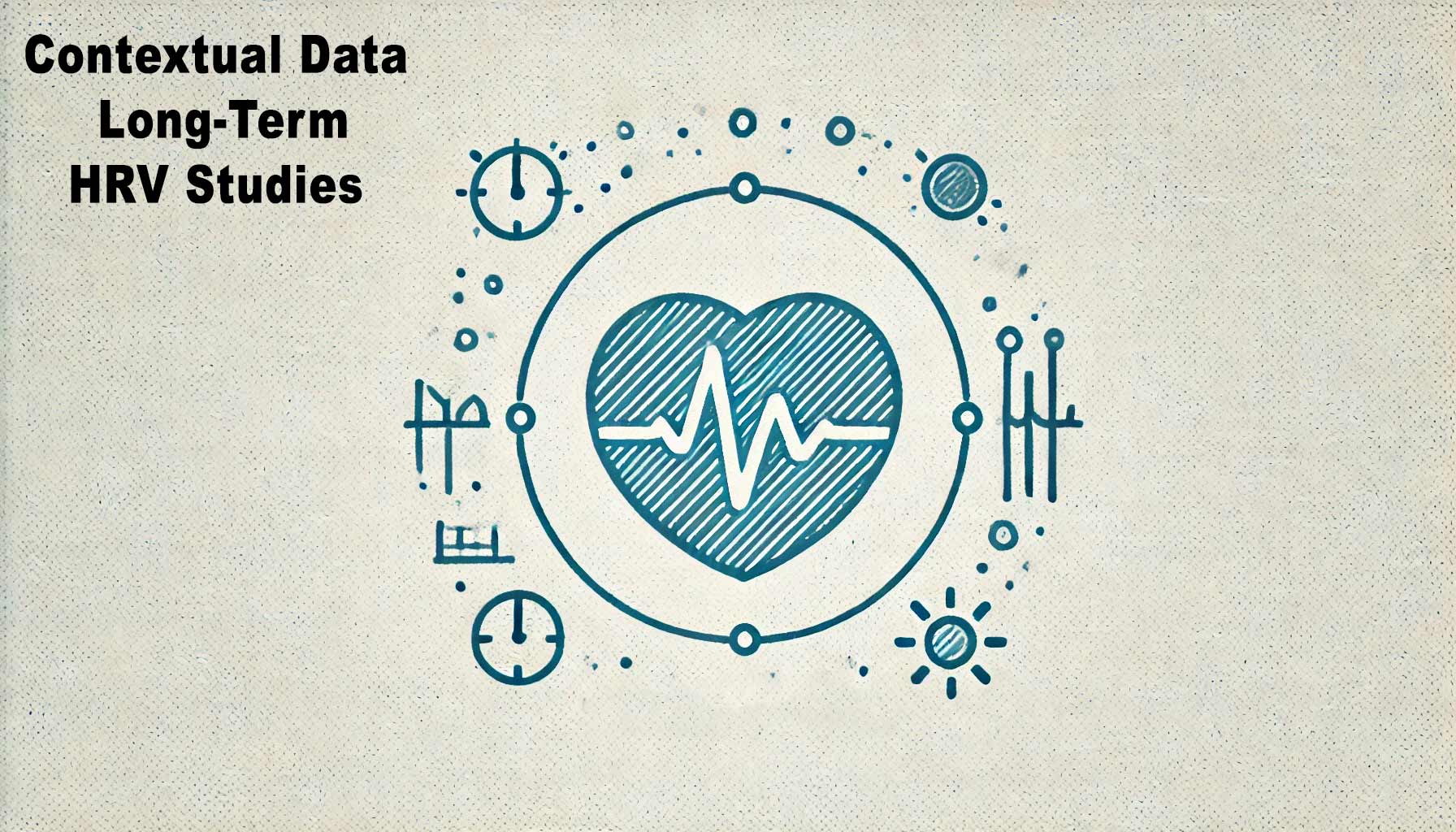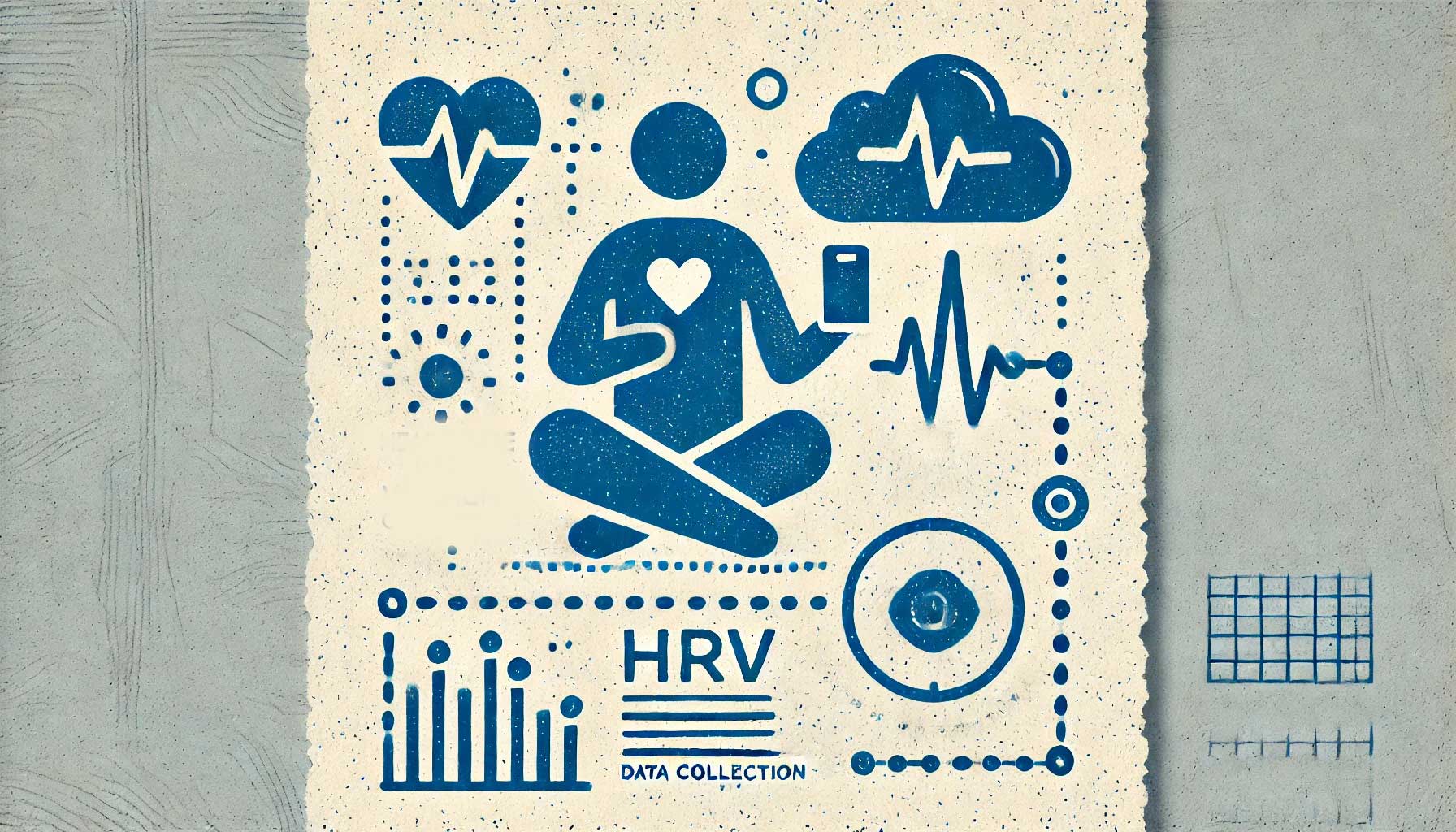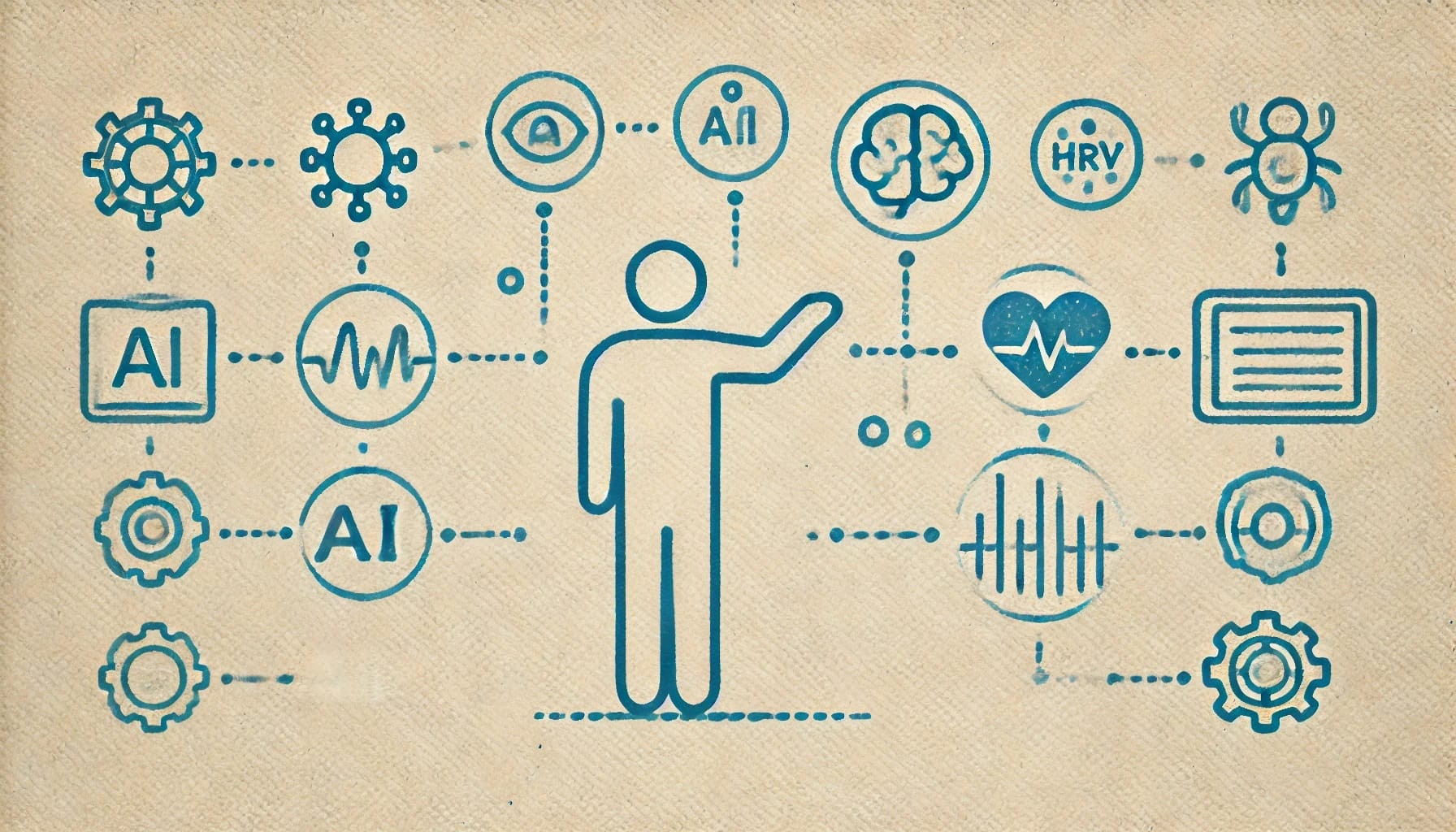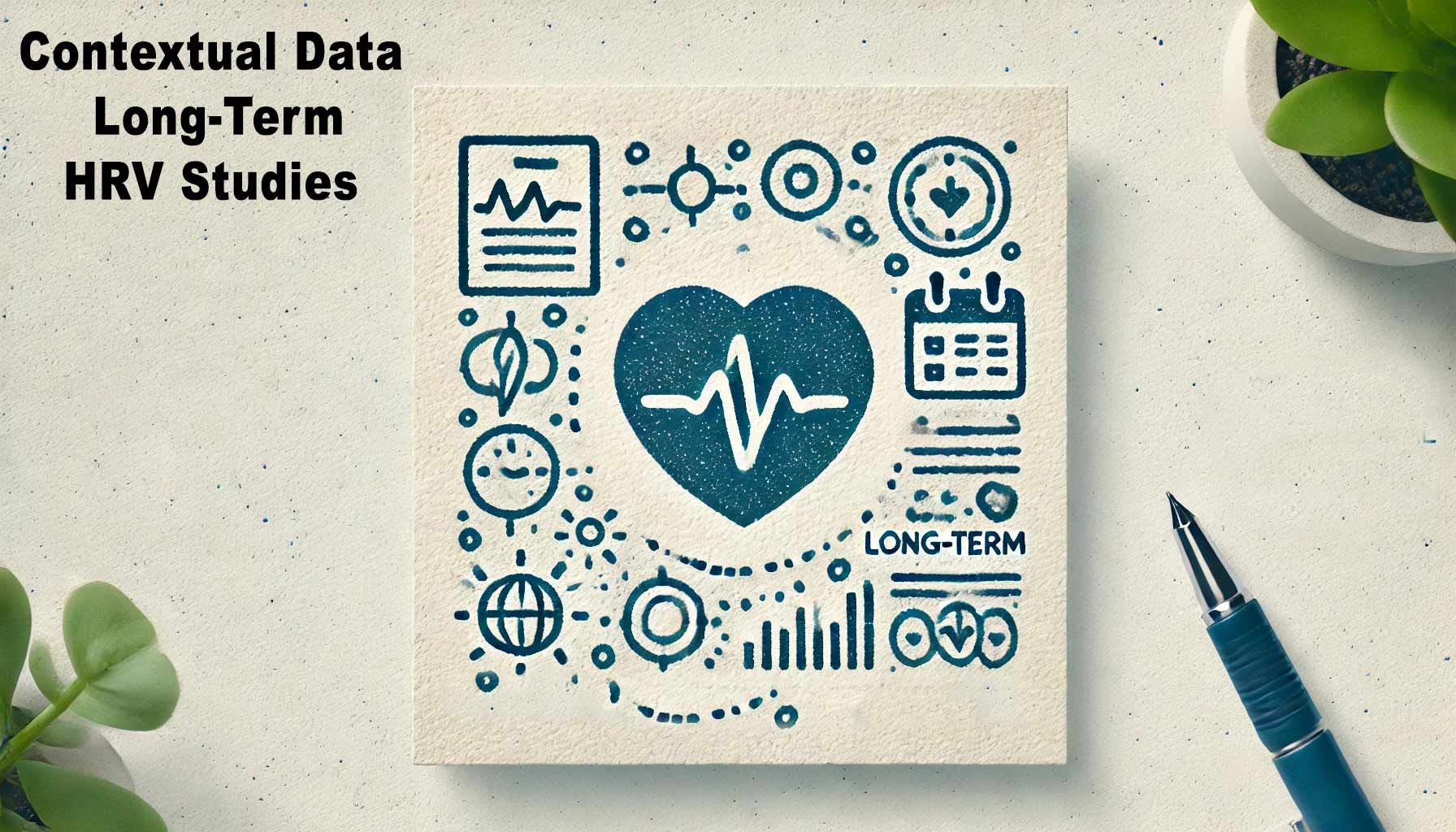I. Introduction
Heart Rate Variability (HRV) offers valuable insights into autonomic nervous system function and overall cardiovascular health. However, analyzing HRV in isolation often provides an incomplete picture of a person’s physiological state. Integrating contextual data – such as physical activity, sleep, stress levels, environmental conditions, and behavioral factors – enhances HRV analysis by adding layers of information that explain the “why” behind changes in HRV. This approach helps researchers understand the broader physiological and psychological factors influencing HRV and provides a more comprehensive understanding of health and wellness.
Incorporating contextual data into long-term HRV studies not only improves the accuracy of HRV analysis but also enhances its relevance. Contextual data allows for a more personalized understanding of health and helps tailor interventions to individual needs. This article explores the types of contextual data that can be integrated with HRV, methods for data integration, and practical examples of how these combinations can yield deeper insights in research and clinical settings.

II. Types of Contextual Data for HRV Analysis
A. Physical Activity and Exercise Data
Physical activity significantly impacts HRV, making it crucial to account for movement and exercise when analyzing HRV data. Devices like accelerometers, gyroscopes, and GPS trackers can provide detailed information on a person’s physical activity levels, intensity, and type. By synchronizing this data with HRV measurements, researchers can better understand how different types of activities – such as walking, running, or sedentary behavior – affect autonomic function.
Example: In a study examining the effects of exercise on stress recovery, researchers could use accelerometer data to label periods of moderate and vigorous activity and correlate these with HRV changes. This integration helps determine the impact of various physical activities on stress reduction and recovery, allowing for personalized exercise recommendations.

B. Sleep Data
Sleep is closely related to HRV, with different sleep stages and quality affecting autonomic function. Integrating HRV data with sleep stage information from polysomnography, actigraphy, or wearable devices enables researchers to analyze the relationship between sleep quality and HRV more effectively. This integration is particularly useful for identifying HRV patterns associated with sleep disorders, such as sleep apnea or insomnia.
Example: Researchers could integrate HRV data with sleep data from a wearable device that tracks sleep stages to identify how deep sleep or REM sleep correlates with HRV recovery metrics. Understanding these relationships can help develop personalized interventions to improve sleep quality and overall health.
C. Stress and Emotional State Data
Stress and emotional states are major factors influencing HRV. Wearable stress monitors that measure skin conductance, heart rate, or cortisol levels can provide real-time data on stress levels. When combined with HRV data, this information helps researchers explore how different stressors and emotional states impact autonomic function.
Example: In workplace stress research, HRV data could be integrated with self-reported stress levels or physiological stress indicators from wearables to study the impact of daily work activities on employee stress. This approach can help identify high-stress periods and guide interventions to improve workplace wellness.

D. Environmental Data
Environmental factors such as air quality, noise levels, temperature, and humidity can significantly impact HRV. Integrating HRV data with environmental data helps researchers understand how external conditions affect autonomic function, especially in different population groups, such as those living in urban versus rural settings.
Example: A study could combine HRV data with environmental data collected from sensors in different locations to analyze the effects of air pollution on autonomic function in city dwellers versus rural residents. This insight could inform public health policies aimed at mitigating environmental stressors.
E. Behavioral and Lifestyle Data
Behavioral and lifestyle factors, including diet, caffeine intake, alcohol use, smoking, and medication, can influence HRV. Integrating self-reported lifestyle data with HRV measurements allows for a more comprehensive view of the factors affecting autonomic function. This combination can guide personalized health recommendations and interventions.
Example: Researchers could collect HRV data alongside a digital diary of participants’ daily habits, such as caffeine consumption or medication use. By analyzing these combined datasets, they can determine how specific behaviors impact HRV and make individualized health recommendations accordingly.
Integrating these diverse types of contextual data with HRV enhances the richness of analysis, providing a more nuanced understanding of autonomic function and overall health. The next section will delve into various methods for collecting and integrating these data types, discussing the tools and techniques that make this integration feasible and effective.

III. Methods for Integrating Contextual Data in HRV Studies
Integrating contextual data with HRV involves synchronizing and combining multiple data streams to create a more comprehensive dataset for analysis. This integration requires careful consideration of data collection methods, synchronization techniques, and analytical tools. Below are some effective methods for integrating contextual data in HRV studies:
A. Synchronized Data Collection with Wearable Devices
Wearable devices are among the most practical tools for synchronizing HRV data with other physiological and contextual data streams. Modern wearables can capture multiple data types—such as HRV, physical activity, sleep stages, and stress indicators—simultaneously. This synchronization allows for real-time analysis of how different factors affect HRV.
Example: A wearable device that monitors HRV, accelerometry (to track physical activity), and skin conductance (to assess stress levels) can provide a synchronized dataset for understanding how physical exertion and stress interact to impact HRV throughout the day. This comprehensive data allows for more personalized insights into stress management and recovery needs.

B. Multi-Sensor Systems for Comprehensive Data Integration
Multi-sensor systems combine data from multiple devices or sensors to provide a richer and more nuanced dataset for HRV analysis. These systems often use a combination of ECG monitors, accelerometers, environmental sensors, and more to capture a wide range of physiological and contextual data. Integrating this data can reveal complex interactions between different factors that affect HRV.
Example: A study could use a multi-sensor system that integrates an ECG for HRV measurement, an accelerometer for tracking physical activity, and environmental sensors for monitoring air quality and temperature. This setup allows researchers to analyze how exercise and environmental conditions like heat or pollution together influence HRV and autonomic responses, providing a comprehensive view of health in varying contexts.
C. Data Fusion Techniques for Combining Multiple Data Streams
Data fusion techniques combine multiple data sources at different levels—such as sensor fusion, feature-level fusion, and decision-level fusion – to create a cohesive dataset for analysis. These techniques allow researchers to integrate heterogeneous data types effectively and analyze them in a unified framework, improving the reliability and robustness of the results.
Example: In a study examining the effects of lifestyle factors on HRV, researchers could use feature-level fusion to combine HRV data with sleep, diet, and physical activity features. This fusion can help identify complex patterns, such as how poor sleep quality combined with high physical activity impacts HRV, potentially leading to more targeted health recommendations.

D. Using Machine Learning to Contextualize HRV Data
Machine learning models, such as Random Forests, Neural Networks, and Support Vector Machines, can be applied to integrated datasets to analyze HRV data in the context of other physiological and contextual factors. These models can identify complex, non-linear relationships and provide predictive insights into how different factors interact to influence HRV.
Example: Researchers could develop a machine learning model that integrates HRV data with physical activity, sleep, and stress measurements to predict individual stress responses. By training the model on this comprehensive dataset, it could provide personalized predictions and interventions, such as suggesting specific relaxation techniques after detecting a pattern of stress during certain activities.
By employing these methods, researchers can effectively integrate contextual data with HRV to provide a richer and more meaningful analysis. This approach not only enhances the understanding of HRV but also allows for more tailored and impactful health interventions.
The next section will provide practical examples of how integrated contextual data can be applied in different research and clinical settings to develop personalized health plans, manage chronic conditions, improve workplace wellness, and optimize sports performance and recovery strategies.

IV. Practical Examples of Integrating Contextual Data with HRV
Integrating contextual data with HRV can significantly enhance the practical applications of HRV analysis across various fields, from personalized health and wellness programs to clinical research and sports science. Below are some examples of how this integration can be applied to provide actionable insights and improve outcomes in different settings.
A. Personalized Health and Wellness Programs
Combining HRV data with physical activity, sleep, and stress data can help create personalized health and wellness programs that cater to individual needs. By understanding how these factors interact to influence HRV, healthcare providers can offer tailored recommendations for lifestyle changes, stress management, and overall well-being.
Example: A digital health platform could integrate HRV data from a wearable device with daily physical activity, sleep quality, and self-reported stress levels. The platform could analyze this integrated data to provide personalized advice, such as suggesting light exercise after poor sleep or recommending relaxation techniques during high-stress periods. Over time, these insights could help users optimize their routines for better autonomic balance and health.

B. Monitoring Chronic Conditions and Disease Management
Integrating HRV with lifestyle and environmental data can aid in the management of chronic conditions like hypertension, diabetes, and cardiovascular diseases. This comprehensive approach helps healthcare providers understand the multiple factors influencing a patient’s autonomic function and adjust treatment plans accordingly.
Example: For patients with hypertension, HRV data could be combined with data on medication adherence, dietary habits, and daily physical activity. An integrated analysis might reveal patterns where specific lifestyle behaviors or lapses in medication correlate with changes in HRV, indicating suboptimal autonomic regulation. Clinicians can use these insights to modify treatment plans, emphasize behavioral changes, or provide additional support.
C. Workplace Health and Stress Management
HRV data integrated with stress, activity, and environmental data can be valuable in designing workplace wellness programs that aim to reduce stress and improve employee well-being. By monitoring HRV in real-time and contextualizing it with daily work activities and environmental factors, organizations can identify high-stress periods and implement targeted interventions.
Example: In a corporate wellness program, employees could wear devices that monitor HRV, physical activity, and stress levels throughout the day. Integrated data analysis might show that HRV significantly drops during late afternoon meetings. Based on this finding, the organization could adjust meeting schedules, introduce relaxation breaks, or offer mindfulness sessions to mitigate stress and improve productivity.

D. Sports Performance and Recovery Optimization
Integrating HRV data with physical activity and sleep data is especially useful in sports science for optimizing athletic performance and recovery strategies. By understanding how different training intensities, recovery periods, and sleep quality affect HRV, coaches and sports scientists can develop adaptive training programs tailored to individual athletes.
Example: In an athletic training program, HRV data from a wearable device could be integrated with GPS data for tracking running distances, accelerometry for measuring intensity, and sleep data for assessing recovery quality. The combined dataset would enable coaches to identify periods of overtraining or inadequate recovery, prompting adjustments to the training load, intensity, or rest days to enhance performance and prevent injuries.
These practical applications demonstrate the power of integrating contextual data with HRV to gain deeper insights and develop more effective health strategies. By combining diverse data types, researchers and practitioners can make more informed decisions, tailor interventions, and ultimately improve individual and population health outcomes.
The final section will discuss important considerations for ensuring data quality, privacy, and ethical compliance when integrating multiple data sources in HRV studies, along with tips for overcoming common data integration challenges.

V. Considerations for Data Quality, Privacy, and Ethics
Integrating contextual data with HRV in research and clinical practice offers valuable insights, but it also comes with significant challenges related to data quality, privacy, and ethical compliance. Addressing these challenges is crucial to ensure the validity of research findings and to protect participants’ rights and well-being. Below are key considerations for managing these aspects effectively.
A. Ensuring Data Quality and Reliability
Data quality is foundational to any HRV analysis, especially when integrating multiple types of contextual data. Poor data quality can lead to incorrect conclusions, ineffective interventions, and potential harm. Ensuring high-quality, accurate, and reliable data collection and handling is essential for robust analysis.
Challenges and Solutions:
- Sensor Errors and Calibration Issues: Devices like wearables and environmental sensors can have inaccuracies or require frequent calibration. Regular validation of sensor data against standardized reference measures is necessary to maintain data quality.
- Data Synchronization: Integrating HRV with contextual data requires precise synchronization to ensure that the data streams align correctly in time. Automated synchronization protocols and timestamping can help align datasets accurately.
- Handling Missing Data: Missing data can occur due to sensor errors, non-compliance, or environmental interferences. Imputation methods, such as multiple imputation or machine learning-based approaches, can be employed to address missing data and minimize bias in the analysis.

B. Addressing Data Privacy and Security Concerns
Integrating diverse datasets – especially those containing sensitive information such as health, behavioral, and environmental data – poses significant privacy and security risks. Researchers must prioritize data protection to safeguard participants’ information and comply with ethical standards and regulations.
Considerations and Best Practices:
- Data Anonymization and Pseudonymization: Personal identifiers should be removed or replaced with pseudonyms to protect participant identities. These techniques help minimize the risk of data breaches while allowing for meaningful analysis.
- Data Encryption and Secure Storage: Employ strong encryption methods for data transmission and storage to prevent unauthorized access. Secure servers and cloud services with robust access control measures can further enhance data security.
- Informed Consent and Transparency: Clearly communicate with participants about the types of data being collected, how it will be used, and the measures in place to protect their privacy. Ensure that informed consent is obtained, and provide options for participants to withdraw their data if they wish.
- Compliance with Regulations: Adhere to relevant data protection laws and regulations, such as GDPR in the EU or HIPAA in the United States. Compliance involves regular audits, updating data protection policies, and training research staff on data security protocols.

C. Dealing with Data Integration Challenges
Integrating multiple data sources presents technical and analytical challenges, such as data alignment, format standardization, and managing large, heterogeneous datasets. Overcoming these challenges is essential to ensure that the integrated data is usable and provides reliable insights.
Challenges and Strategies:
- Data Alignment and Standardization: Different data sources may have varying formats, units, or time intervals. Using standardized data formats and conversion methods can help ensure consistency across datasets.
- Managing Large Datasets: Large, multimodal datasets can be challenging to handle, store, and analyze. Leveraging big data platforms, cloud computing resources, and data management tools can improve storage efficiency and processing speed.
- Interoperability of Data Sources: Ensuring interoperability between different devices, sensors, and software platforms is crucial for seamless data integration. Using open standards and APIs can facilitate data sharing and integration across systems.
By addressing these considerations, researchers can maintain high data quality, protect participant privacy, and overcome technical challenges when integrating contextual data with HRV. This ensures that the findings are both scientifically valid and ethically sound, ultimately contributing to more effective and trustworthy health research.

VI. Conclusion
Integrating contextual data with HRV in long-term studies opens new opportunities for richer, more meaningful analysis, leading to personalized health interventions, improved disease management, optimized athletic performance, and enhanced workplace wellness. However, this integration requires careful attention to data quality, privacy, and ethical considerations to ensure reliable and impactful outcomes.
Researchers are encouraged to leverage the methods and practical examples discussed in this article to explore the full potential of integrating contextual data into their HRV studies. By doing so, they can push the boundaries of HRV research and contribute to the development of more precise, holistic, and personalized approaches to health and well-being.
Call to Action
📅 If you want to learn more about Fibion’s solution for measuring HRV, do not hesitate to book a video call with our expert Dr. Miriam Cabrita.

🔍 You may also discover other valid and reliable products in our portfolio, such as the Fibion Research, Fibion Vitals, Fibion Sleep, Fibion Sens, Fibion Emfit, and Fibion Circadian, all designed to assist in research measuring physical activity, sedentary behavior, and sleep.
✨ For those interested in an in-depth look at the features and pricing across available heart rate variability (HRV) actigraphy tools, we invite you to explore our comprehensive comparison sheet. Click here for access.
Frequently asked questions about this topic:
Why is it important to integrate contextual data with HRV analysis? +
Integrating contextual data, such as physical activity, sleep, stress, and environmental factors, with HRV analysis provides a more comprehensive view of a person’s physiological state. It allows researchers to understand the underlying reasons behind changes in HRV and to develop more personalized health and wellness interventions.
What types of contextual data can be integrated with HRV? +
Types of contextual data that can be integrated with HRV include physical activity data, sleep data, stress and emotional state data, environmental data (such as air quality and temperature), and behavioral and lifestyle data (such as diet and medication use). Combining these data types provides a more nuanced understanding of autonomic function and overall health.
What methods can be used to integrate contextual data with HRV? +
Methods for integrating contextual data with HRV include synchronized data collection with wearable devices, multi-sensor systems for comprehensive data integration, data fusion techniques, and machine learning models. These methods enable the collection and analysis of multiple data streams for richer insights into health and wellness.
How can integrating HRV with contextual data improve personalized health and wellness programs? +
Integrating HRV with contextual data allows healthcare providers to create personalized health and wellness programs by understanding how factors like physical activity, sleep, and stress interact to influence HRV. This can lead to tailored recommendations that optimize routines for better autonomic balance and overall health.
What are the challenges of integrating contextual data with HRV? +
Challenges include ensuring data quality and reliability, addressing data privacy and security concerns, and overcoming technical challenges related to data alignment, format standardization, and managing large, heterogeneous datasets. Researchers must also comply with relevant data protection regulations.
How can machine learning be used to analyze HRV data in context? +
Machine learning models can be used to analyze HRV data in the context of other physiological and behavioral factors by identifying complex, non-linear relationships. These models can provide predictive insights and suggest personalized interventions based on integrated datasets.















